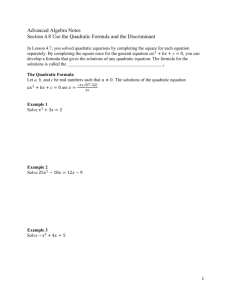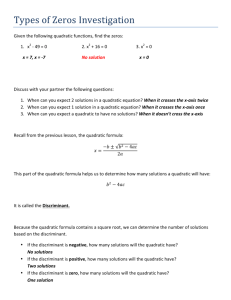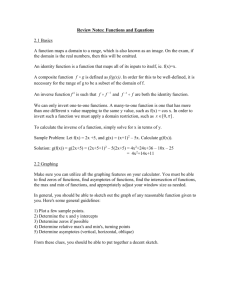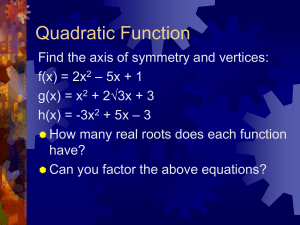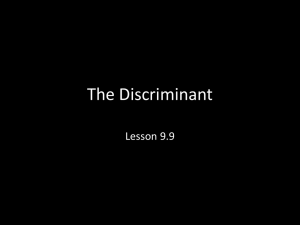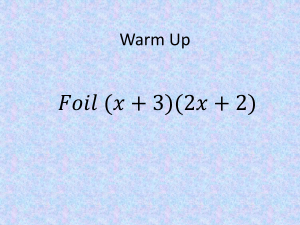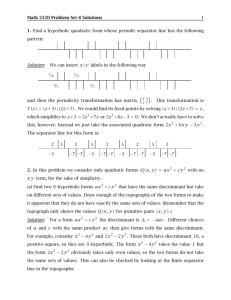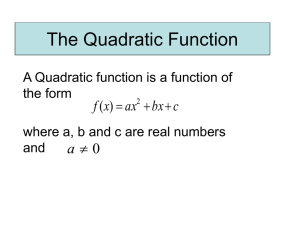Example 2 - Brookville Local Schools
advertisement
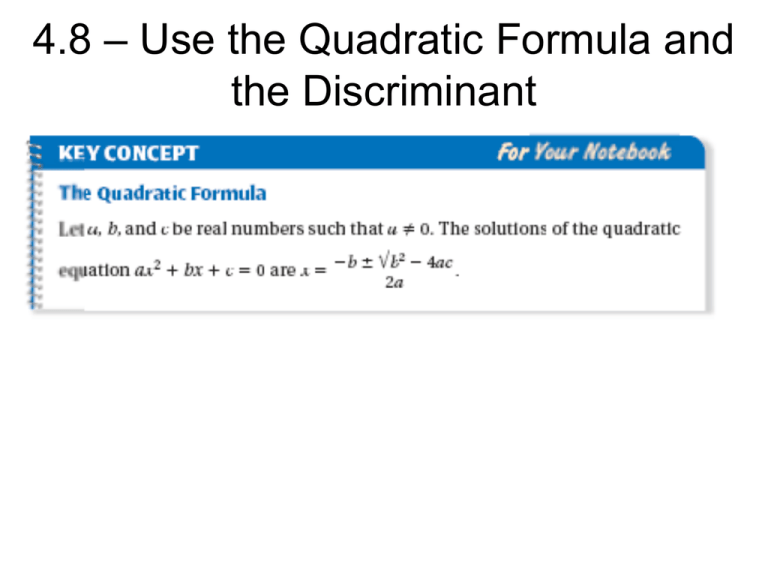
4.8 – Use the Quadratic Formula and the Discriminant 4.8 – Use the Quadratic Formula and the Discriminant Example 1: Solve x2 + 3x = 2 4.8 – Use the Quadratic Formula and the Discriminant Example 2: Solve 25x2 - 18x= 12x – 9 4.8 – Use the Quadratic Formula and the Discriminant Example 3: Solve -x2 + 4x = 5 4.8 – Use the Quadratic Formula and the Discriminant In the quadratic formula, the expression b2 - 4ac is called the discriminant of the assosciated equation ax2 + bx + c = 0 You can use the discriminant of a quadratic equation to determine the equation’s number and type of solutions. 4.8 – Use the Quadratic Formula and the Discriminant 4.8 – Use the Quadratic Formula and the Discriminant Example 4: Find the discriminant of the quadratic equation and give the number and type of solutions of the equation. a. x2 – 8x + 17 = 0 b. x2 – 8x + 16 = 0 c. x2 – 8x + 15 = 0 4.8 – Use the Quadratic Formula and the Discriminant For an object that is dropped: h = -16t2 + h0 For an object that is launched or thrown: h = -16t2 +v0t+ h0 Initial velocity can be positive, negative, or zero depending on whether the object is launched upward, downward, or parallel to the ground. 4.8 – Use the Quadratic Formula and the Discriminant Example 5: A juggler tosses a ball into the air. The ball leaves the juggler’s hand 4 feet above the ground and has an initial velocity of 40 feet per second. The juggler catches the ball when it falls back to a height of 3 feet. How long is the ball in the air? 4.8 – Use the Quadratic Formula and the Discriminant Example 6: A basketball player passes a ball to a teammate. The ball leaves the player’s hand 5 feet above the ground and has an initial velocity of 55 feet per second. The teammate catches the ball when it returns to a height of 5 feet. How long is the ball in the air?
